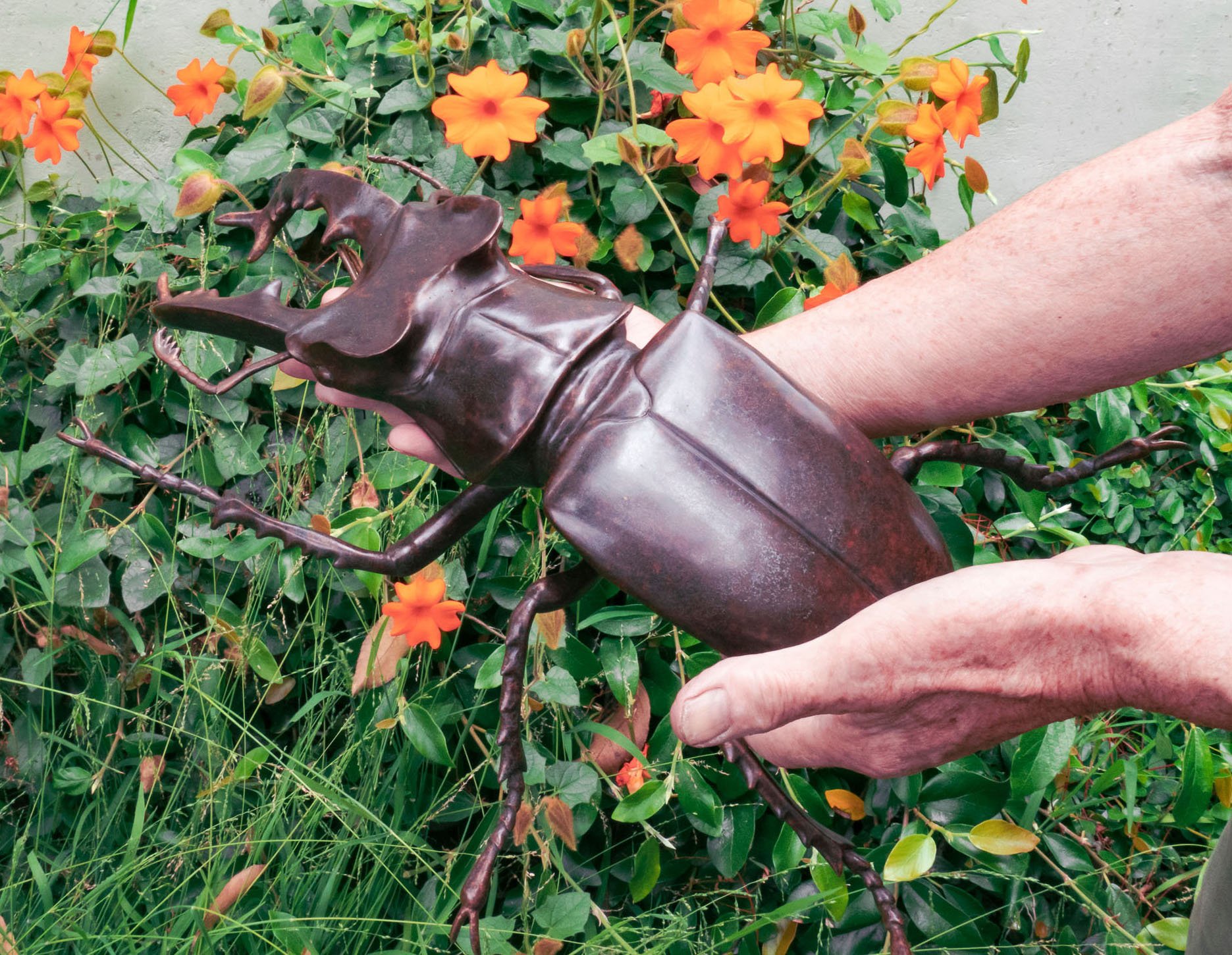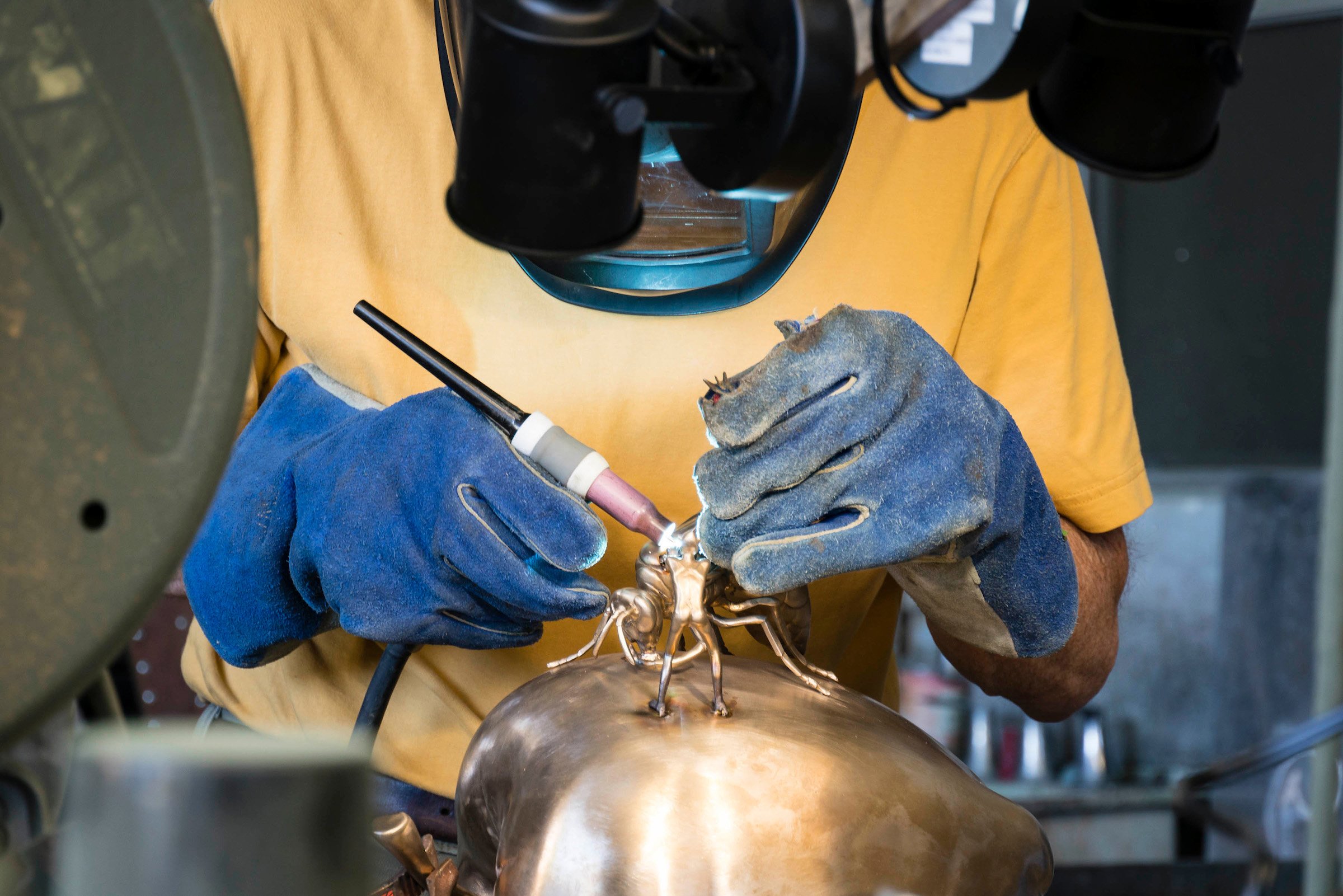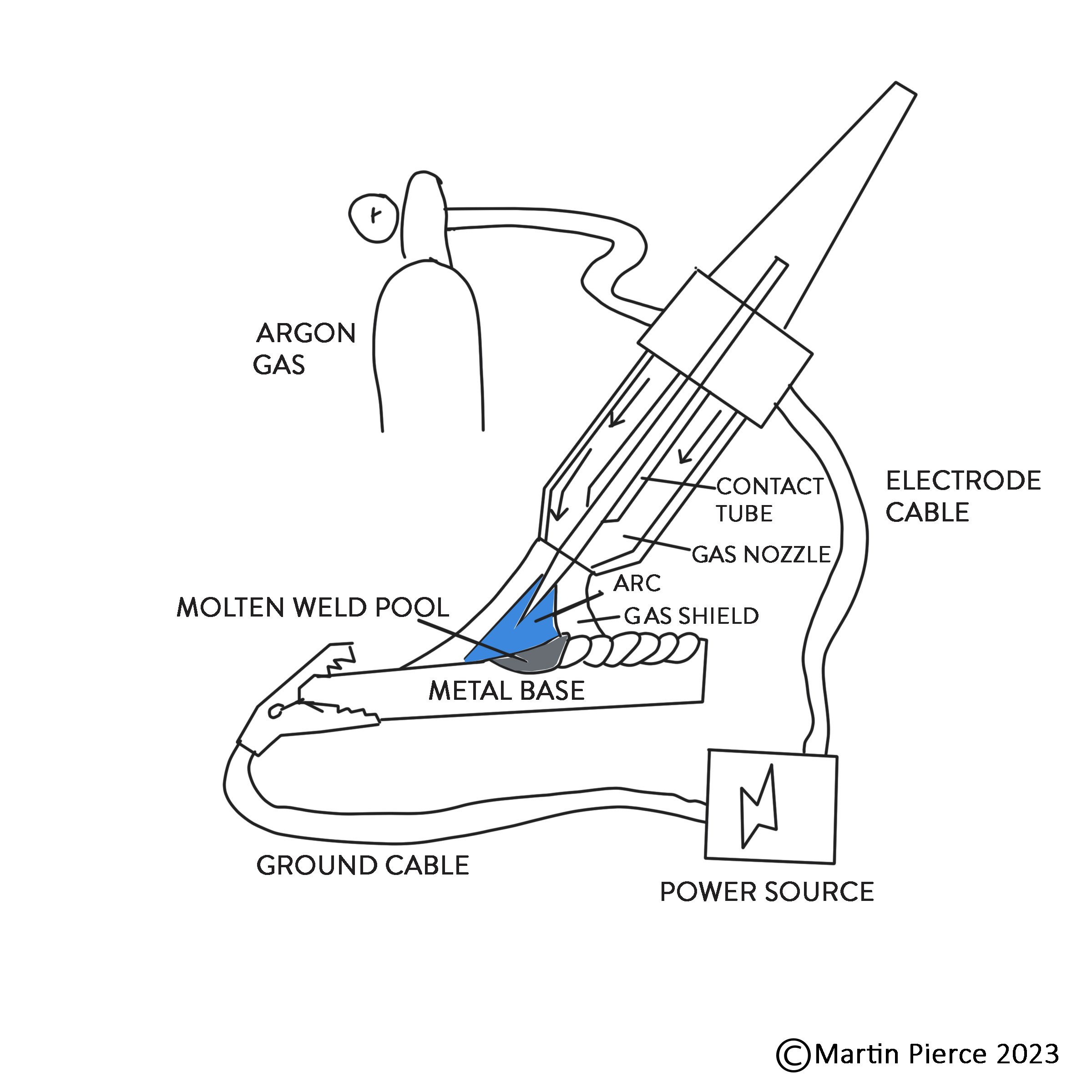In the world of Katydom, Martin Pierce has been focusing on the dung beetle, a central character in his fictional world of large insects and small human-like creatures. In the most recent piece, the dung beetle’s ball is repurposed as a climbing frame by a humanoid seeking to mount the thorax of the beetle so they can compete as a team in the Annual Insect Race. It clearly takes practice to achieve a successful mount which explains why the piece is partly named “Fallen Rider”.
In Katydom neither species nor scale are the source of power or wealth and coexistence is the social norm. Thus, while the new dung beetle and his ball are smaller than other beetles in Katydom they are no less valued. By contrast in the present world of commerce scale generally determines weight and when this comes to bronze explains why the smaller sculpture at 5 lbs is less expensive than it’s much larger 12 lb relative.
The dung ball’s organic appearance is reminiscent of the Morphic collection of door handles, but the uneven surface and imperfect edges give it a clay like appearance. The dung ball will be the focus of other pieces to follow with plans to repurpose it as a fitness center or learning room or summer lodge.
The current piece is finished in a combination of hot and cold patinas with a green thorax and head and dark bronze beetle body and satin brushed light antique ball and polished humanoid.







